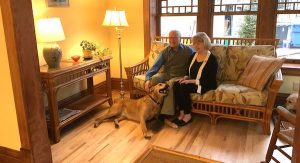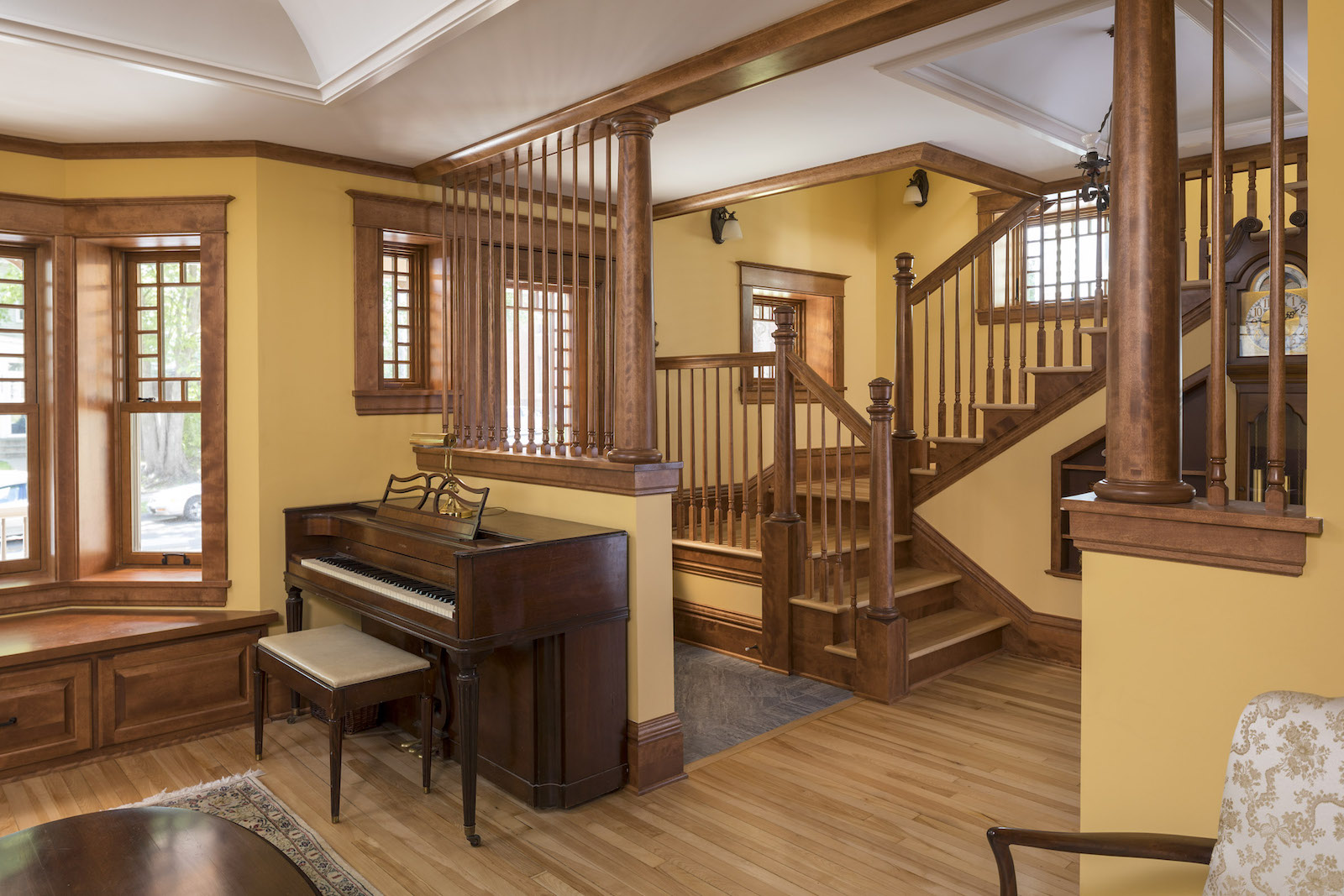Are you worried about what climate change will bring for your children and grandchildren? If so, consider “walking the talk” and send a powerful signal that you care about the issue. A great way to do this is to build or renovate your retirement home to net zero so you can age in place in a way that improves the quality of your life and helps the planet.
Aging in place involves designing and building a home with every feature needed for living independently, indefinitely. The National Association of Homebuilders has come up with a lengthy list of features for aging in place, ranging from low-maintenance exteriors to wide interior doorways. A great start for sure, but more is needed for accomplishing the longer view of leaving a healthy planet for future generations . The challenge is to “age” in a way that enhances the survival of the “place” to connect continuing independence and comfort in living arrangements with ultimate dependence upon the planet for full life-support services.
The real world is starting to catch on to this twofold challenge. Net zero is the current gold standard in sustainable construction. A net-zero structure produces as much (renewable) energy as its occupants consume. An even more ambitious goal is net-positive producing more energy than is used.
There are several important benefits to investing in a net zero energy home that makes it especially well-suited to aging in place. Net zero homes are more durable and quieter with thicker walls and triple-pane windows, more comfortable because there are no drafts and temperatures stay even, and they are healthier thanks to fresh, filtered air from the ventilation system. Zero energy homes require little maintenance and they ensure that energy bills will not go up as the occupants age.

In retirement, Stewart and Linda Herman enjoy the comfort and economic stability of their positive energy home in Minnesota.
A few forward-thinking designers and builders are melding net-zero with aging-in place in new construction. A multi-unit design has been built in New Hampshire. A community housing partnership has erected a set of houses in Virginia. And seniors are designing their own in Taos, NM. Within a few years, net-zero homes should be within reach of many-retiring boomers as the needed skills and materials become more available.
A still more ambitious route is to restore an old house to net zero. Most of us have spent much of our lives, perhaps from childhood, in houses built during the twentieth or even nineteenth centuries. Major cities and suburbs are packed with such houses. They can be notoriously difficult to retrofit for those seeking to age in place, let alone achieving net zero. But it’s not impossible. Starting three years ago, my wife and I renovated a 110-year-old old house in Minneapolis. We wanted to demonstrate that a typical old house on a typical urban lot could achieve net zero without sacrificing attractiveness, comfort or convenience.
After a year of design and two years of construction, our renovation looks, for all the world, like a brand-new 1907 house, complete with Victorian touches of gingerbread and window grills. The geothermal wells, solar panels and extra thick insulation are mostly invisible, while the interior is filled with custom cabinetry, recessed cove ceilings, pocket doors and all the modern conveniences and technical wizardry of sustainability.
It also is equipped for aging in place. The rear entryway can easily accommodate a ramp. The interior doorways are extra wide to accommodate wheelchairs on the ground level, and the staircase is roomy enough for a future stair elevator. The cabinets have soft-close pullouts and drawers. The bathroom is equipped with grab bars including in the shower and tubs, as well as easy-to-clean, wall-mounted toilets which do not accumulate dirt around their pedestals. We used bright LED lighting throughout, including in the closets, and we installed sensor lighting on the exterior. Lever door handles on exterior doors make entry easier, and the exteriors are low-maintenance. The washing and drying machines are raised 12″ above floor level and are served by a laundry chute. All these refinements will go a long way towards enabling us to stay in the house throughout our golden years.
Despite a chilly Minneapolis winter and cloudy spring during the first year of operation, the 54 high-efficiency solar panels produced 25% more solar power than we consumed –in other words, we have achieved net-positive, going beyond net zero. We are offsetting carbon at the rate of 12 tons per year. Although small on a global scale, it’s a real contribution on the right side of the atmospheric ledger and it sends a clear signal to our two daughters where our priorities lie in this era of savage wildfires, floods, and hurricanes.
We boomers are arguably the most fortunate generation in U.S. history. And, many of us continue to strive to make a positive mark on the world. While we cannot undo the atmospheric damage that we contributed to, we still can shrink our carbon footprint by reconstructing our aging nests, or building new ones, to be net zero homes. Who is better positioned than us baby boomers to preserve the opportunity to age in place for those who come after?
For More Information on Stewart’s zero energy renovation, please visit the ZEP blog next month for his next contribution Innovations in an 107 Year Old Net Positive Victorian Retrofit.

